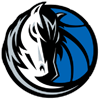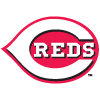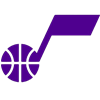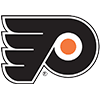RotoWire's Jeff Stotts checks in on this week's key injuries around the NBA.
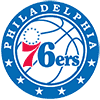 Ben Simmons and Joel Embiid
Ben Simmons and Joel Embiid
The Sixers are dealing with multiple injuries, including significant injuries for their two All-Stars. Simmons was the first of the two to go down after he aggravated a lower back injury. The issue was originally described as lower back tightness but was recently changed to lower back impingement.
Impingement occurs when a body tissue, like a nerve or muscle, becomes pinched somewhere in the body. The term has surfaced multiple times this NBA season, most famously with Kyrie Irving and his balky shoulder. However, Irving's injury likely involves a shoulder tendon or bursa sac while Simmons' injury likely involves a nerve.
Symptoms associated with an impinged nerve include pain, numbness, and potential muscle weakness. However, treating symptoms is only a temporary fix. It is essential for Simmons' long-term health that whatever is causing the impingement be identified and addressed. For lower-back impingement, that can be a multitude of things, including disc, muscle, or bone. Each of these options come with a different treatment plan, so it's unlikely Simmons moves past this problem quickly.
Obviously, the injury is a major blow for his fantasy value, though Shake Milton has emerged as a reasonable replacement in the short-term. Milton has averaged 21.3 points, 4.8 assists, and 4.3 made three-pointers since joining the Sixers' starting unit four games ago. Milton will continue to see major minutes, especially with Josh Richardson recovering from a nasal injury
RotoWire's Jeff Stotts checks in on this week's key injuries around the NBA.
 Ben Simmons and Joel Embiid
Ben Simmons and Joel Embiid
The Sixers are dealing with multiple injuries, including significant injuries for their two All-Stars. Simmons was the first of the two to go down after he aggravated a lower back injury. The issue was originally described as lower back tightness but was recently changed to lower back impingement.
Impingement occurs when a body tissue, like a nerve or muscle, becomes pinched somewhere in the body. The term has surfaced multiple times this NBA season, most famously with Kyrie Irving and his balky shoulder. However, Irving's injury likely involves a shoulder tendon or bursa sac while Simmons' injury likely involves a nerve.
Symptoms associated with an impinged nerve include pain, numbness, and potential muscle weakness. However, treating symptoms is only a temporary fix. It is essential for Simmons' long-term health that whatever is causing the impingement be identified and addressed. For lower-back impingement, that can be a multitude of things, including disc, muscle, or bone. Each of these options come with a different treatment plan, so it's unlikely Simmons moves past this problem quickly.
Obviously, the injury is a major blow for his fantasy value, though Shake Milton has emerged as a reasonable replacement in the short-term. Milton has averaged 21.3 points, 4.8 assists, and 4.3 made three-pointers since joining the Sixers' starting unit four games ago. Milton will continue to see major minutes, especially with Josh Richardson recovering from a nasal injury and concussion sustained over the weekend.
Embiid's injury also has a degree of ambiguity to it. Embiid suffered a sprained shoulder when he collided with Cleveland big man Ante Zizic. However, the involved joint remains unclear.
The shoulder complex is comprised of multiple joints. The glenohumeral joint is what most people view as the true shoulder joint and is the ball-and-socket joint formed from the head of the humerus (upper arm bone) and the glenoid cavity of the scapula (shoulder blade). The sternoclavicular (SC) joint is the only connection between the arm and the trunk of the body and is located where the clavicle (collarbone) meets the sternum (breastbone). The collarbone continues along the shoulder until it meets the acromion of the shoulder blade, forming the third joint, the acromioclavicular (AC) joint. Here the collarbone serves as a strut for the shoulder, creating a pivot point that allows for a high degree of motion.
Based on a few reports and Embiid's reaction following the injury, it seems he avoided injury to his glenohumeral joint and is dealing with a low-grade sprain of his AC or SC joint. Given the manner in which it occurred, an AC sprain seems like the most likely option. Low-grade sprains can heal without surgery and it's possible Embiid is back within the next seven-to-10 days.
Oddly enough, Simmons missed a pair of games earlier this season with his own AC sprain. In the meantime, Al Horford will probably remain with the starting unit with Glenn Robinson replacing Embiid in the five-man unit. Robinson's insertion into the starting lineup has not resulted in an increase in fantasy production as he has averaged just 3.0 points on 33 percent shooting.
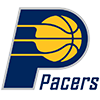 Jeremy Lamb
Jeremy Lamb
The guard suffered a significant knee injury when he awkwardly fell following a dunk attempt against the Raptors. A MRI performed on the joint revealed Lamb tore his anterior cruciate ligament (ACL) and lateral meniscus while also suffering a lateral femoral condyle fracture.
The knee is a hinge joint comprised of multiple stabilizers to protect the overall integrity of the joint, including four ligaments (the ACL, MCL, LCL, and PCL) and two fibrocartilage menisci. Each structure is designed to manage a particular load or stress. For example, the menisci are built to prevent excessive movement of the knee while absorbing stress placed on and through the joint.
Despite their durability, each of these structures can fail if a sizable force or stress is applied to the knee. The manner in which the stress occurs can shape the tissues involved in the injury. The ACL is vulnerable in multiple positions including rotation with the foot planted or hyperextension.
To make matter worse, a high number of knee injuries, including ACL ruptures, are often accompanied by bone damage. During an injury, the distal end of the upper leg bone (the femoral condyle) often slams into the proximal end of one of the upper leg bones (the tibial plateau). This impact can leave the surfaces of both bones contused or even fractured.
Lamb's fall left him with a trifecta of injuries, including damage to ligament (ACL), cartilage (lateral meniscus), and bone (femoral condyle). Given the timing of the injury, his recovery will undoubtably carry over into next season as the average return to play for recent ACL tears in the NBA is roughly 342 days. The complexity of his injury could extend that timeline, especially if additional surgical intervention is needed for any of his injuries, particularly the fracture.
Lamb's absence will open up the door for more minutes for the Holiday brothers, though their fantasy value appears to be limited to plug-and-play situations. Aaron Holiday has not scored in double figures since Lamb went down, while Justin Holiday was held to just two points in Sunday's win over the Cavaliers.
Fast Breaks
LaMarcus Aldridge: Aldridge has missed two consecutive outings with a shoulder strain and will remain out Tuesday night. Look for the former All-Star to continue to receive treatment on his muscle-related injury in the coming days. The Spurs are hoping to have him back for Friday's game in Brooklyn.
Stephen Curry: Curry's return to the court has been pushed back a bit after it was believed he would return March 1 against the Wizards. It appears the Warriors will handle the recovery from a fractured hand extremely conservatively and want him to get additional practice reps before his return. He spent Monday with the Warrior's G-League franchise and could be back in action by the end of the week.
Luka Doncic: The second-year star missed two separate stints this season due to a problematic ankle. Unfortunately, Doncic is now dealing with a different injury after he sprained his left thumb. He played through the injury against the Spurs and Heat but was clearly limited. He admitted after the loss to Miami that he was surprised by how much the sprain and brace affected his touch.
Doncic opted to sit out a win over the Timberwolves but was back in the lineup Monday night against the Bulls.









